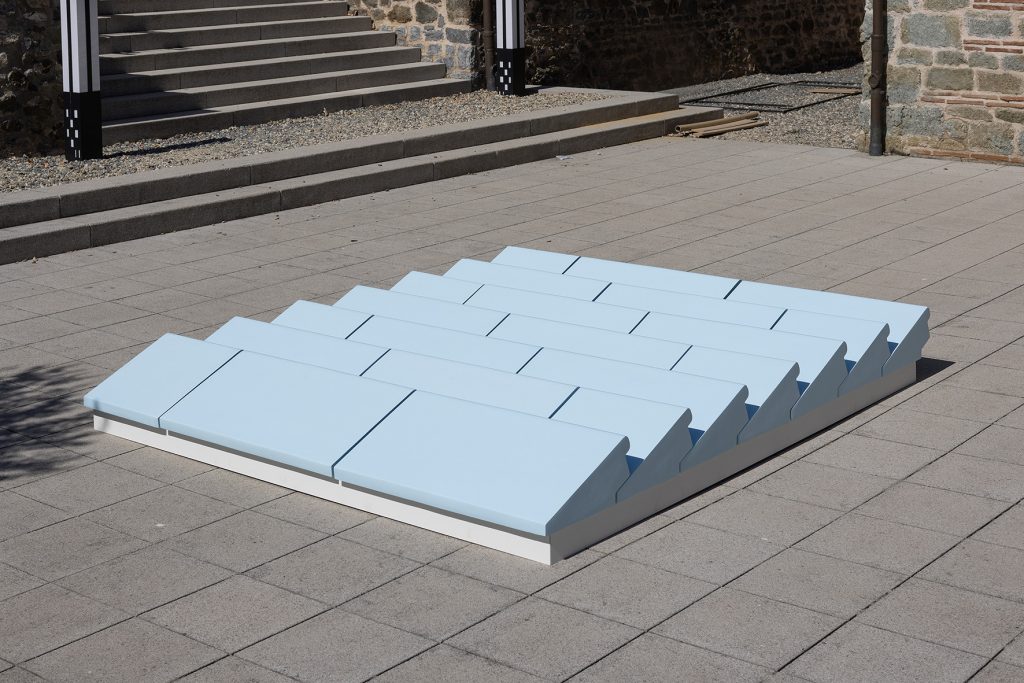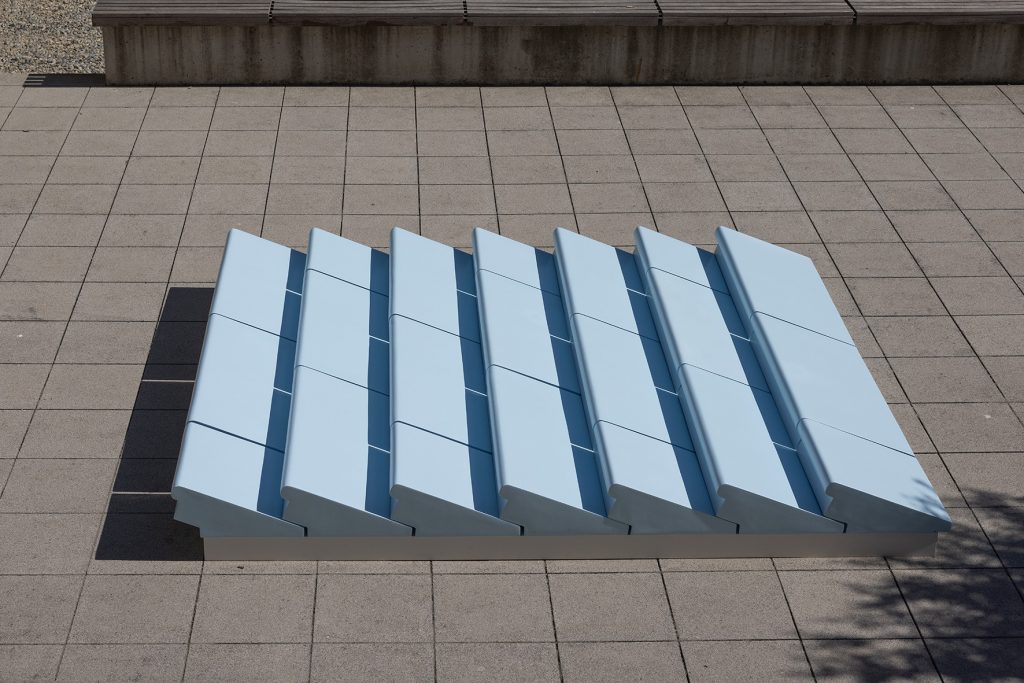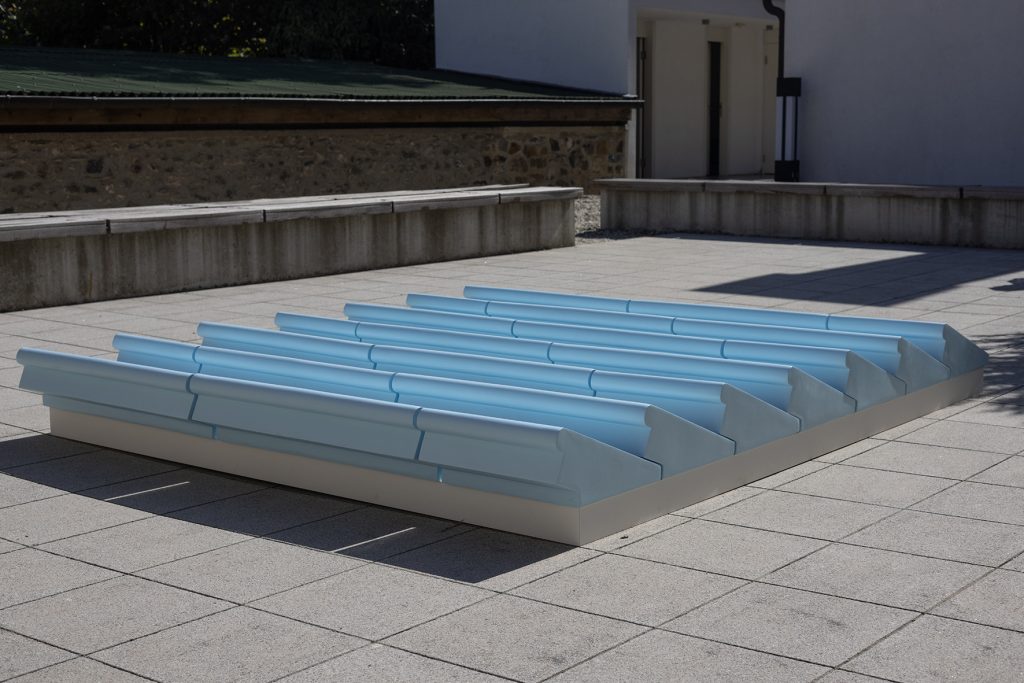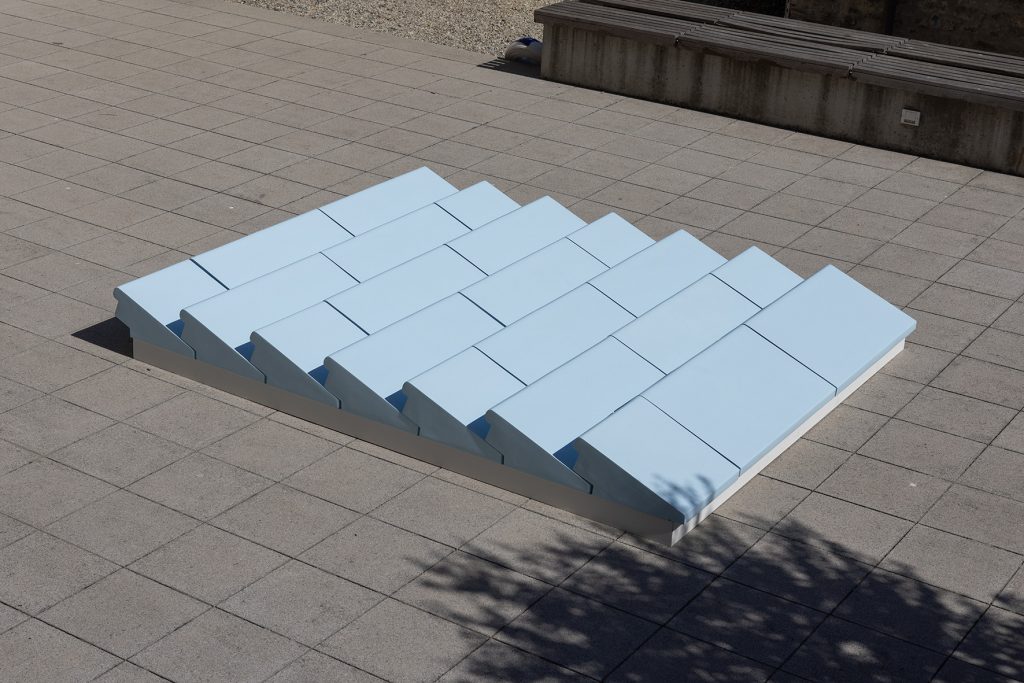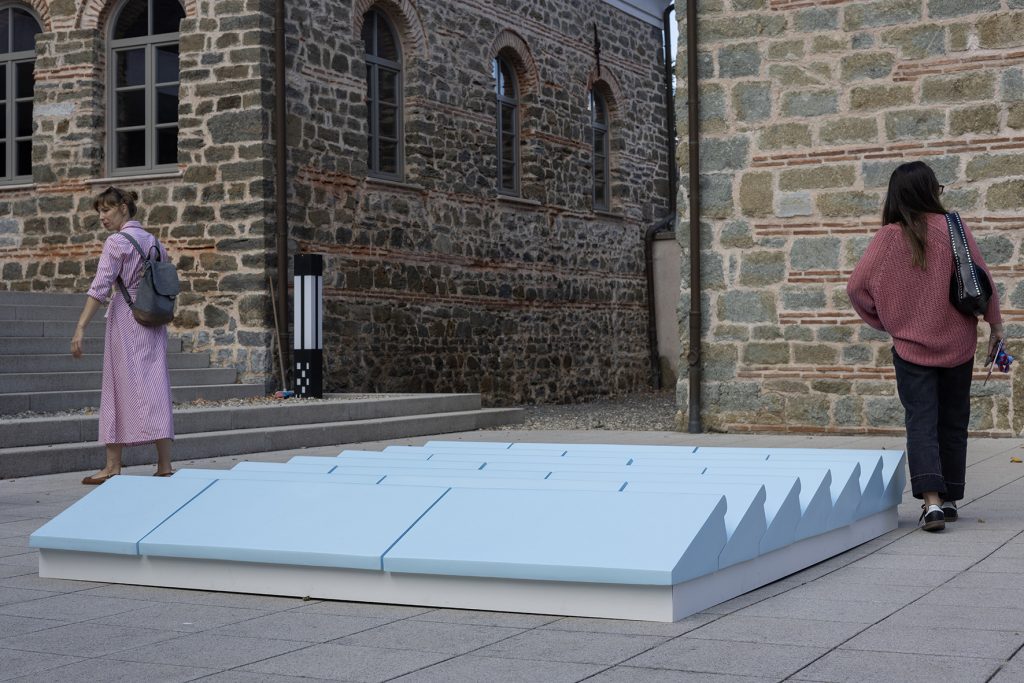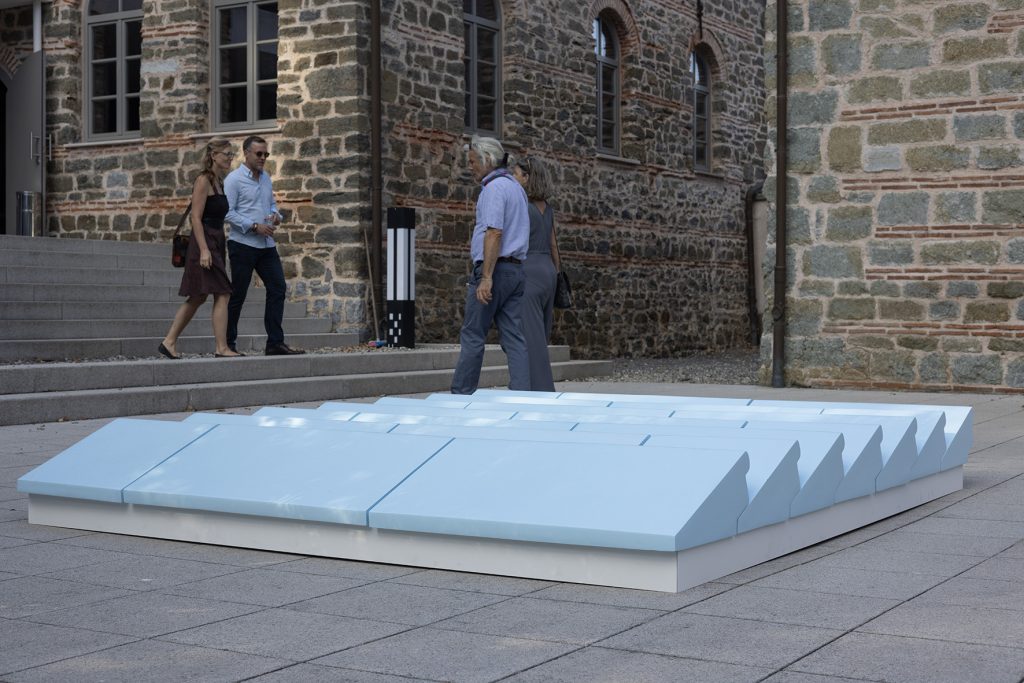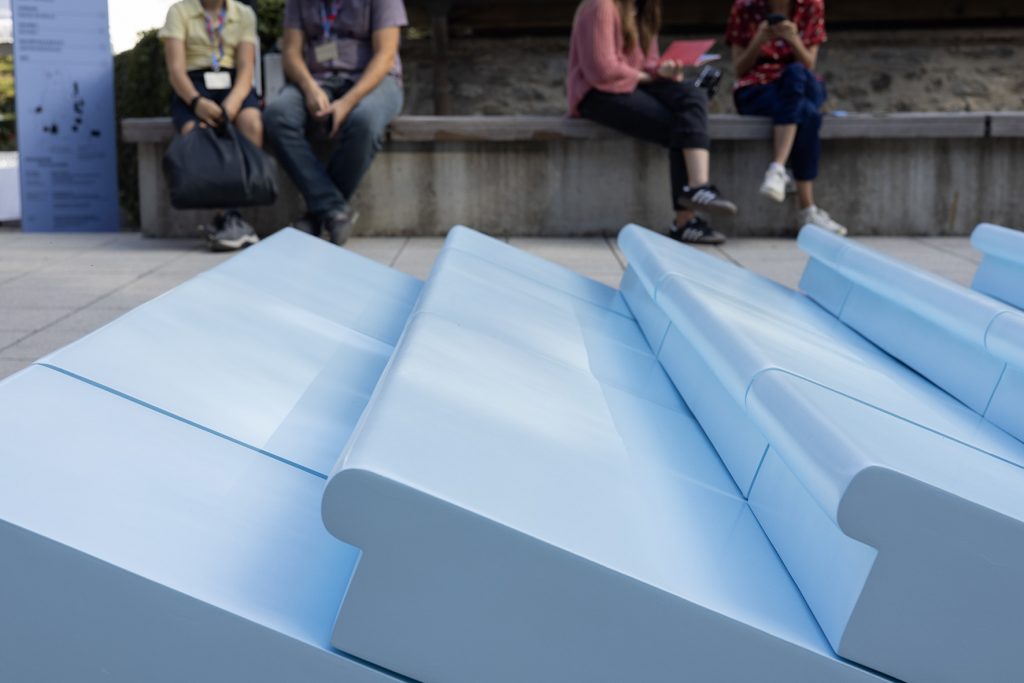Neither Up nor Down (2019-2023)
paint on polyester, 262×225 cm
The project consists of a 1:1 scale model of a cross-section of the staircase that once led to the world’s tallest flagpole on a 3-hectare pedestal-like square in Baku, and takes a humorous look at the race to be the world’s tallest.
From 1982 to 2010, Kaesong, North Korea, held the record for the tallest flagpole at 160 m. Baku, Azerbaijan, took the record in 2010 with a height of 162 m, but lost it less than a year later to Dushanbe, Tajikistan, with a 165 m flagpole. In 2014, Jeddah, Saudi Arabia, took the record with a 171-meter flagpole, and in September 2021, construction began on a new 191-meter flagpole in Baku to reclaim the world record. While scheduled for completion in 2022, a 202-meter flagpole was erected in Cairo, Egypt, in late 2021. Since then, the construction of the new flagpole in Azerbaijan has not been completed (July 2023).
Stairs, like flagpoles, have the main function of moving (things) up or down. With the flagpole as a representation of power, these stairs create a vertical, almost sacred path to that power. They bring people to the base of the giant flagpole. But the closer you get to the pole, the smaller you become with each step.
“Neither Up nor Down” disrupts the way power is represented through verticality by shifting the perspective to the horizontal. With a 1:1 scale model of the staircase parallel to the ground, this staircase is shown as dysfunctional; one can neither go up nor down, separating it from a path to power.
Photo: Nazlı Erdemirel
Installation view; Summerfestival at Kulturakademie Tarabya, Istanbul
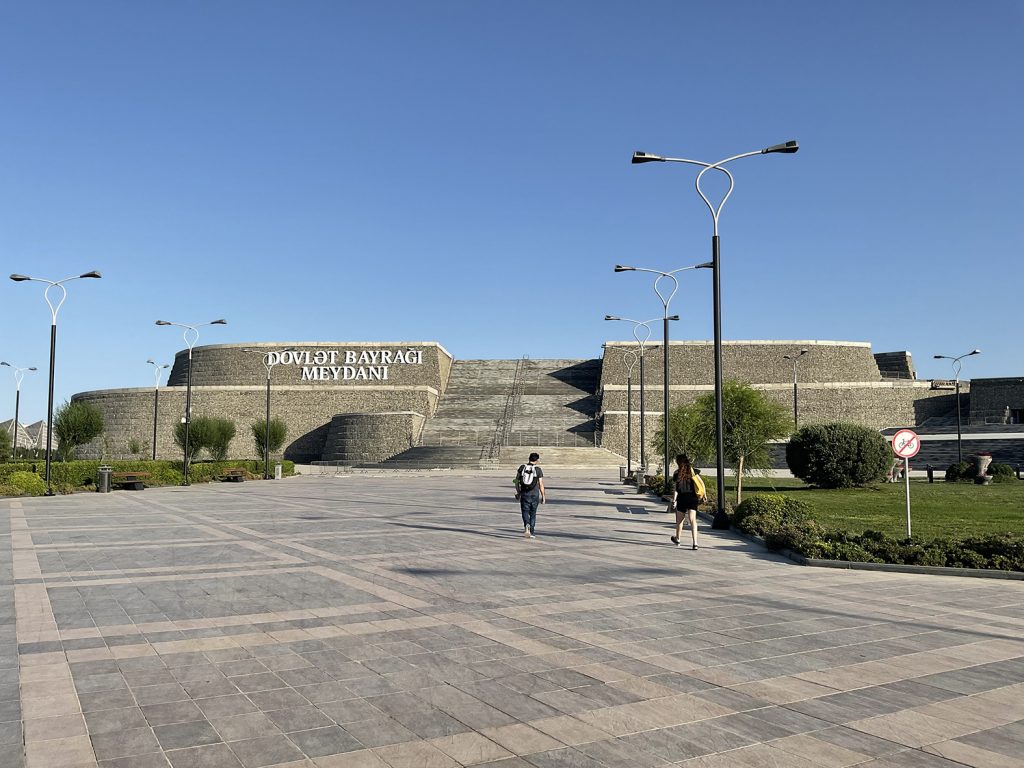
commons.wikimedia.org/wiki/File:National_Flag_Square.jpg(opens in a new tab)

